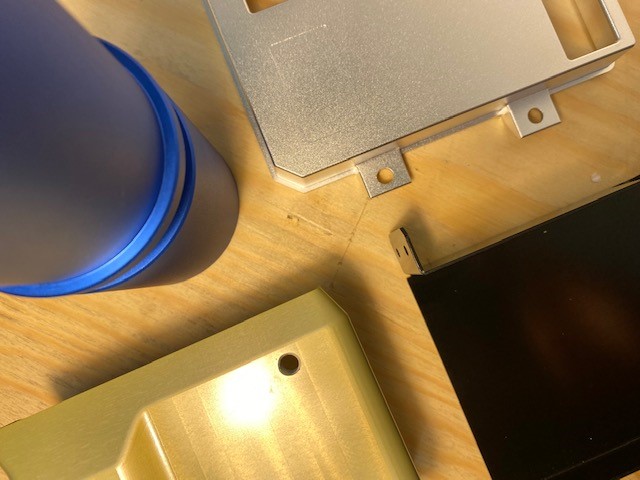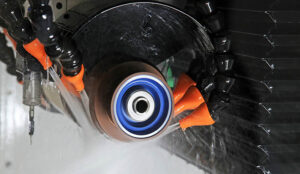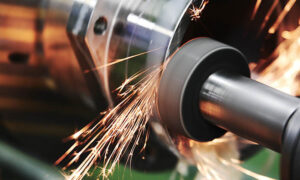For thousands of years, humans have relied on goods manufactured from metal. Our everyday lives have been and still are shaped by metal. The way we eat, sleep, and even the way we breathe is enhanced by or enabled by metal. Various metal materials make up the products we use for enjoyment, livelihood, and health.
Although this manufacturing resource is a pivotal aspect of our lives, it is imperfect. Metal often requires additional processing and finishing to improve its characteristics, similar to a fine woodworking piece requiring a suitable finish such as stain, varnish, or paint. The science of metal finishing is so vast that it may appear too daunting to tackle, but the following is a guide to understanding and applying the appropriate metal finish for the task at hand.
Anodizing
Among the variety of metal finishing techniques is a process known as anodizing. The anodizing process produces one of the most unique and appealing finishes and is one of the most common choices in metal finishing techniques. Anodized parts are often found on custom motorcycles, high-performance cars, aerospace applications, and even promotional carabiner clips.

When referring to anodizing aluminum, the anodizing process creates a layer of controlled oxide on the part’s exterior. This oxide layer acts as a lasting, corrosion-resistant, and eye-appealing surface.
The oxide layer is applied to the base metal by way of electrolysis. The aluminum part to be anodized is submerged in a vat of acid and acts as the anode. Accompanying the aluminum part in the acid is a cathode material. When an electrical current passes through the closed circuit of the aluminum, acid, and cathode,
oxygen ions are off-gassed from the acid and mixed with the aluminum atoms to form the oxide layer. The anodized parts may also be submerged in a colored dye that adds the typical bright colored finish to many aluminum products.
In further detail, there are three types of aluminum anodizing. Each type has its unique characteristics and applications.
● Type I, IB, and Type II anodizing – to provide corrosion and abrasion resistance, often in applications where a thin layer is necessary due to the need to inspect critical material failures, commonly found in the aerospace industry.
● Type IC and IIB anodizing – when a more environmentally friendly application is necessary. The lack of chromium in IC and IIB is appealing in applications where environmental regulations are a factor.
● Type III anodizing – where components in an assembly require higher wear resistance, commonly in gear trains and other applications where parts may rub against one another.
Passivation
In addition to the process of anodizing is another finishing technique that alters a metal products’ characteristics. The process, known as passivation, reduces metal’s chemical reactivity by treating or coating the metal’s surface. Just as anodizing creates an oxide layer, the process of passivation ultimately creates a controlled layer of oxide on the metal component’s surface.
When passivating stainless steel, the component is introduced to an acid bath (nitric or citric acid). The acid bath removes iron from the stainless-steel component’s surface and leaves behind the chromium. When chromium is exposed to oxygen, it forms a controlled layer of oxide and creates a corrosion-resistant surface on the stainless steel surface.
The process of passivation occurs after welding or machining operations due to the manufacturing process’s possibility of altering the stainless steel’s characteristics. Such impurities as dirt, chips, or small particulates may remain on the metal component’s surface. Passivation is the solution to the problems that may exist after welding and machining operations occur. The following list is a set of steps that occur during passivation of stainless steel:
● Components are cleaned of all oils and foreign substances by using a detergent-based cleaner.
● Deionized water is used to rinse the component.
● Components are introduced to the acid bath to create the oxide layer.
● Components are again rinsed with deionized water.
● Components are dried and tested to ensure they meet the specified standard.
Heat Treating
When analyzing the desired characteristics of a finished metal component, heat-treating should be considered. Heat treatment is a controlled process that changes the properties of a metal component by way of heating and cooling cycles. The heat treatment process changes the structural characteristics of metal by using a combination of hardening, annealing, normalizing, and tempering. There are three essential steps to achieve any of the processes – heating, soaking, and cooling.

● Heating is the portion of the heat treatment process that alters the metal structure by bringing its temperature to a specific level. When this temperature is reached, the elements of the metal absorb into one another.
● Soaking is the next step in the heat treatment process. This step requires the material to be held at its heating temperature until its wholly and evenly heated.
● Cooling is the final step in the heat treatment process. Metals are either cooled by quenching them in a liquid such as oil or water, or by allowing them to air cool. There is a prescribed cooling method for the type of metal in either scenario and the desired characteristics of the heat-treated metal.
During the above heat treatment process, ferrous metals will become much harder when rapidly cooled than in their normal state. Although this may be a desirable outcome, the metal at this point is typically much too brittle. The tempering process will reduce the hardened material’s brittleness by heating the metal once again to a much lower temperature and allowing it to air cool. Metals may also be annealed to increase their ductility and to reduce internal stresses in the material. The annealing process requires the metal to be held at a specified temperature and slowly air-cooled back to room temperature. Normalizing ferrous metals occurs before the hardening process to parts that will be subject to later machining or forging. The normalizing process reduces the metal’s internal stresses by heating it past the hardening temperature and allowing it to cool.
Polishing
Polishing is another excellent example of metal finishing. This process uses an abrasive compound and an applicator that smooths the metal’s surface, can provide a near reflective finish, and removes oxidation from the metal. A mirror-like finish must start with a more abrasive compound and graduate to finer compounds applied with a higher speed tool such as a buffing wheel. Depending on the material to be polished, the following types of polishing may be used.

● Polishing pads with a conventional abrasive compound.
● Polishing pads with a diamond abrasive compound.
● A composite or metal plate with a diamond compound.
● Non-ferrous metals require a grey or white compound.
● Ferrous metals require a green compound.
● Polishing wheels made of canvas, leather, cloth, rubber, and wool.
A similar metal finishing technique to polishing is the process of lapping. Lapping has a slightly different outcome and application. It often produces a dull finish, features a multidirectional pattern finish, and has its application in tighter tolerance situations that require more precise final dimensions and geometry.
Final Thoughts
As we shape the materials that make up our society, our society is, in turn, shaped by the products we create. Navigating through our daily lives, we encounter countless types of metal with an endless variety of finishes. Rudyard Kipling wrote, “but iron, cold iron, is master of them all.” Although metal in a raw state has its advantages over other manufactured materials, the finishing techniques outlined above provide a much higher potential out of finished metal products. The information above merely scratches the surface of the topic of metal finishing. Selecting the correct finishing process and understanding its steps to complete the process must be researched further. This guide helps begin the first stages in the quest for a suitable finishing process for a manufactured metal component.
If you have questions about metal finishing options for your Machined or Sheet Metal components, don’t hesitate to reach out to us.
